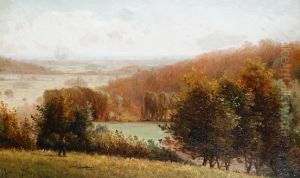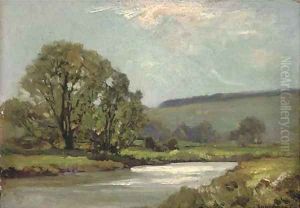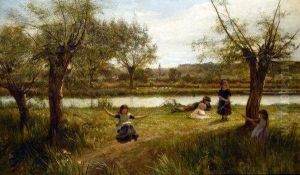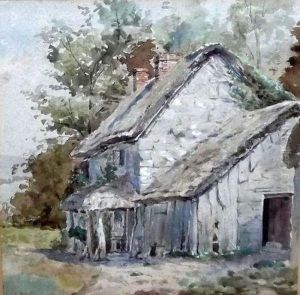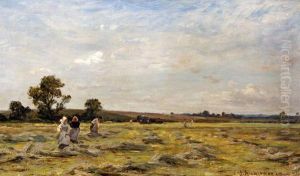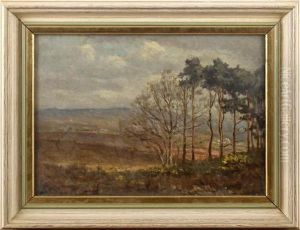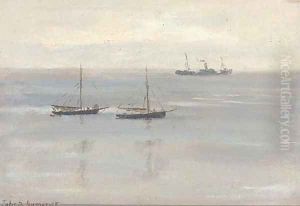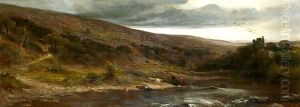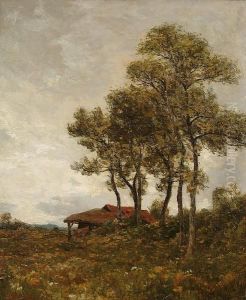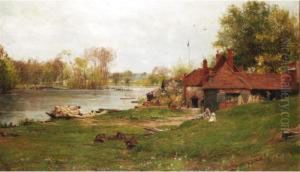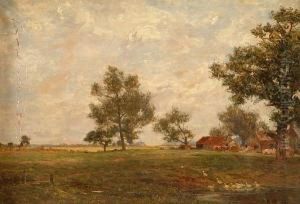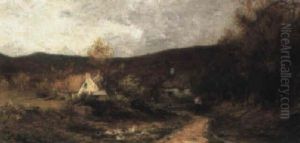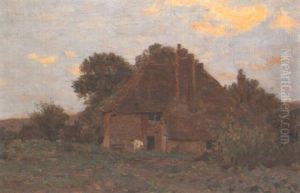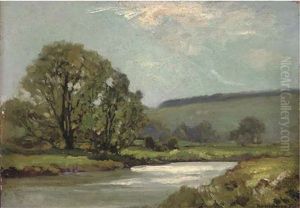James Aumonier Paintings
James Aumonier was an English landscape painter born in Camberwell, London, on October 9, 1832. He initially worked as a commercial clerk, but his passion for art led him to pursue a career in painting. He was largely a self-taught artist, although he received some instruction from artist George Lance.
Aumonier's landscapes often depicted the serene and pastoral scenes of England, reflecting the idyllic countryside life. He was known for his meticulous attention to detail and his ability to capture the subtleties of light and atmosphere, influenced by the French Barbizon school and the works of John Constable.
He began exhibiting his works in the 1860s, with his first painting shown at the British Institution in 1864. Aumonier became a regular exhibitor at the Royal Academy from 1872 onwards and also showed his works at the Royal Society of British Artists and the New Watercolour Society, which later became the Royal Institute of Painters in Water Colours. His reputation grew, and he became one of the leading landscape painters of his time.
Throughout his career, Aumonier remained dedicated to landscape painting, resisting the temptation to shift to the more lucrative genre of portraiture. He traveled extensively throughout the UK, finding inspiration in the varied landscapes of regions such as Surrey, Wales, and Scotland.
James Aumonier's work was well-received by both critics and the public, and he accumulated several honors over his career. He was elected as a member of the Royal Institute of Painters in Water Colours in 1882. He continued to paint until his death on April 4, 1911, leaving behind a significant body of work that contributes to the understanding and appreciation of the English landscape tradition in the 19th century.


